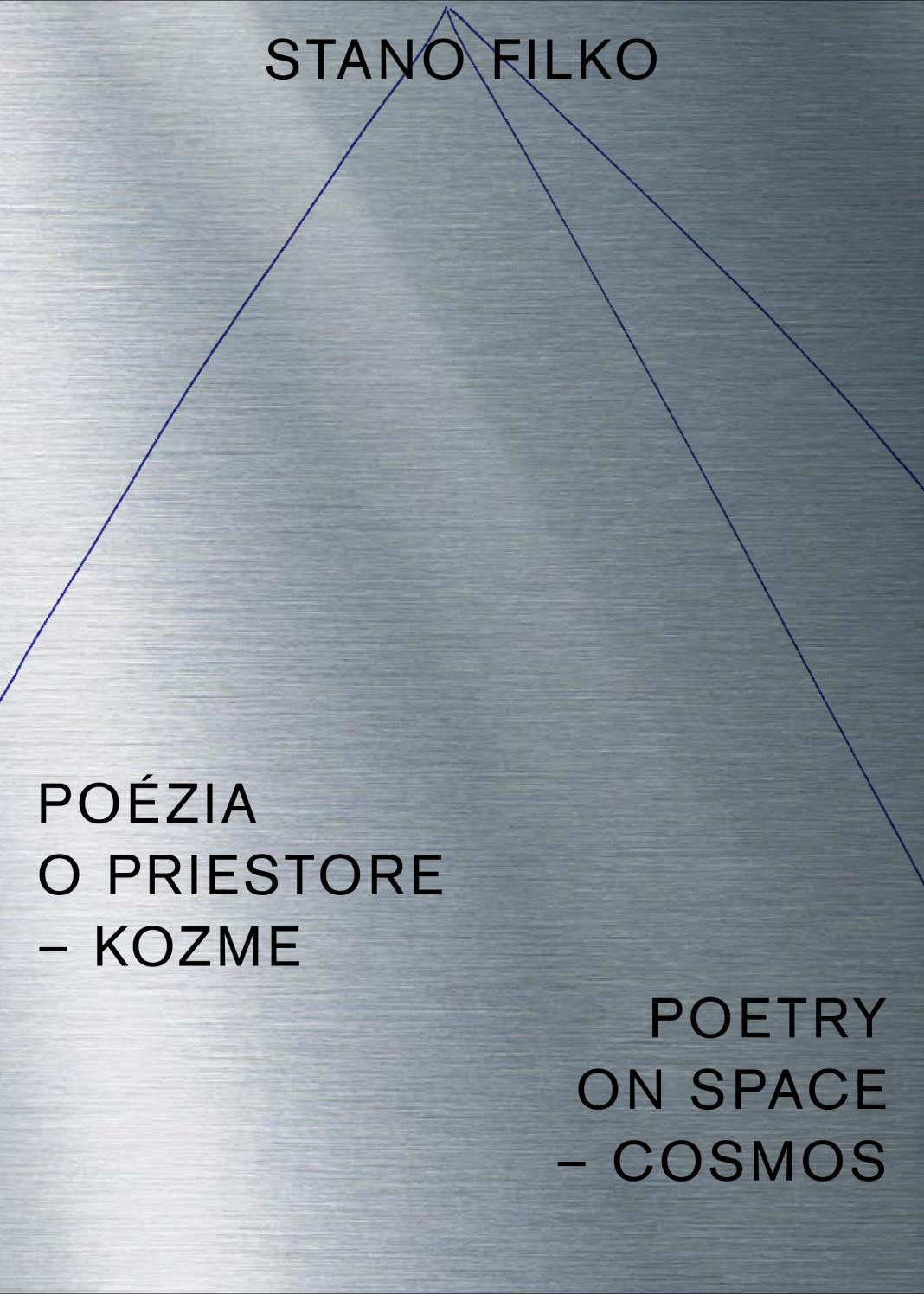Stano Filko: Poetry on Space – Cosmos (2016) [Slovak/English]
Filed under catalogue | Tags: · art, cosmology, neo-avant-garde, space, time

Stano Filko (1937-2015) was a key figure in the Slovak neo-avant-garde, associated primarily with environment, installation, happening, and action. In his work he developed a cosmology structured by three principles: red (biology, eroticism, life, 3D), blue (cosmos, the unknown, 4D), and white (transcendence, God, 5D). He spent the 1980s as an émigré in the United States.
This catalogue documents an exhibition focusing on his work from the 1960s-70s, held at the Slovak National Gallery in Bratislava from June-September 2016.
Edited by Lucia Gregorová Stach and Aurel Hrabušický
Publisher Slovak National Gallery, Bratislava, 2016
ISBN 9788080591977
97 pages
PDF (6 MB, updated on 2016-8-22)
Issuu
Audio guide for the exhibition (Slovak/English, added on 2016-8-22)
WHW, tranzit.hu, Muzeum Sztuki w Łodzi, kuda.org (eds.): Art Always Has Its Consequences (2010)
Filed under book | Tags: · art, art history, curating, east-central europe, eastern europe, neo-avant-garde

“The publication is a result and a recapitulation a two-year collaborative platform that explored practices through which art reaches its audience and their significance for broader relations between art and society, focusing on four thematic strands: the history of exhibitions, artists’ texts, conceptual design, typography, and institutional archives. The book consists of three chapters; the first chapter contains of a chronology of the overall project events and exhibitions of the past two years. The second chapter is a reader of newly commissioned essays and reprints of relevant historical texts written or selected for the book around the issue of the former East. The third section is a documentation of the closing exhibition in Zagreb.”
Essays and interviews by G. M. Tamás, kuda.org & Hito Steyerl, Ovidiu Tichindeleanu, Renata Salecl, Boris Buden, Ozren Pupovac, Maciej Gdula, Gal Kirn, Hedwig Saxenhuber, Elena Filipovic.
Artist’s writings and documents from Miklós Erdély, Dóra Maurer, Goran Đorđević, Andreas Fogarasi, Guerilla Art Action Group, Tibor Hajas, Sanja Iveković, Andreja Kulunčić, David Maljković, Dimitrije Bašičević Mangelos, Vlado Martek, Piet Mondrian, Ciprian Mureşan, Deimantas Narkevičius, Novi Kolektivizam, Andrzej Partum, Gyula Pauer, Tamás St.Auby, Tomo Savić – Gecan, Sean Snyder, Mladen Stilinović, Bálint Szombathy, Milan Trenc, Ultra-red, GEFF, Radoslav Putar, and Symposium Wroclaw ’70.
Edited by What, How & for Whom/WHW [Ivet Ćurlin, Ana Dević, Nataša Ilić, Sabina Sabolović], Dóra Hegyi & Zsuzsa László [tranzit.hu], Magdalena Ziółkowska & Katarzyna Słoboda [Muzeum Sztuki w Łodzi], and new media center_kuda.org
Publisher What, How & for Whom/WHW, Zagreb, 2010
ISBN 9535595113, 9789535595113
265 pages
via WHW
Christian Höller (ed.): L’Internationale: Post-War Avant-Gardes Between 1957 and 1986 (2012/2015)
Filed under book | Tags: · art, art history, avant-garde, neo-avant-garde

“L’Internationale is a trans-institutional network of five major European museums and artists’ archives (Moderna galerija Ljubljana; Július Koller Society Bratislava/Vienna, MACBA Barcelona, Van Abbemuseum Eindhoven, M HKA Antwerp).
Taking as its starting point these five museums and their respective collections, L’Internationale—Post-War Avant-Gardes Between 1957 and 1986 presents a wide range of case studies, historiographical and theoretical essays that reconsider a period in art history that, according to the established canon, has been almost exclusively dominated by Western Europe and North America. In questioning this canon the publication works to acknowledge the existence of and to explore a dispersed, multi-polar, and at times interconnected neo-avant-gardist field that existed (long) before it became common to think according to frameworks of globalization or trans-nationalism. In the process, this collection of compelling contributions puts many a central question on the table: To what extent has a common international language existed in art over these three decades, while at the same time local terminologies and approaches might have differed significantly? How were such dispersed forms of knowledge and experience situated in their respective social contexts? What parallels of artistic method appeared across different regions, even continents? Finally, can such local narratives be brought together in a new “rhizomatic” way, one that works to reshape our ideas of trans-localism and internationalism?”
With essays by Inke Arns, Zdenka Badovinac, Bart de Baere, Charles Esche, Daniel Grúň, Christian Höller, Bartomeu Mari, Viktor Misiano, Piotr Piotrowski, Georg Schöllhammer, Steven ten Thije, and others.
First published in print by JRP Ringier, Zurich, 2012
eBook Publisher L’Internationale Online, 2015
416 pages
Review: Natalia Smolianskaïa (Critique d’art, 2013).
Comment (0)
